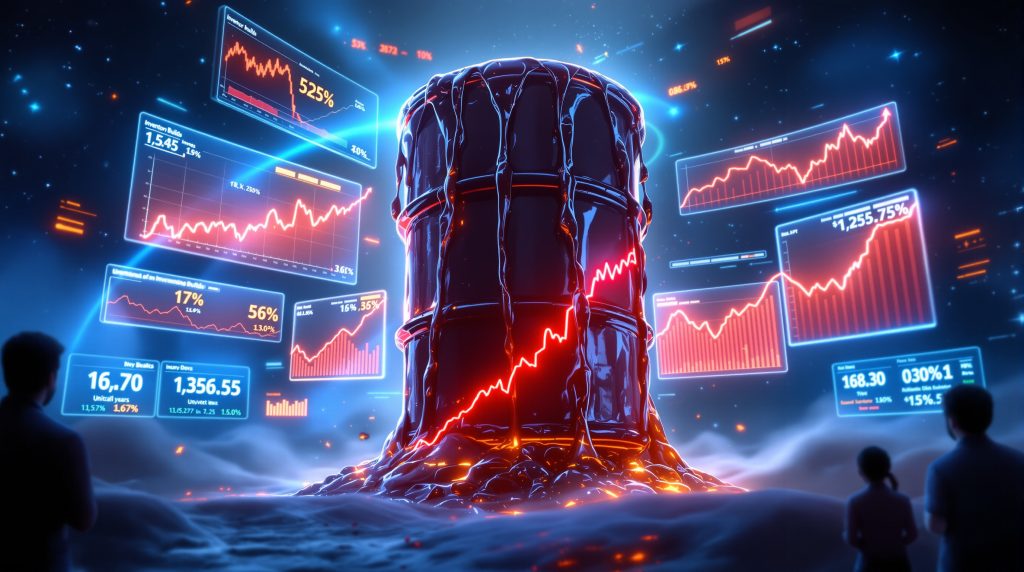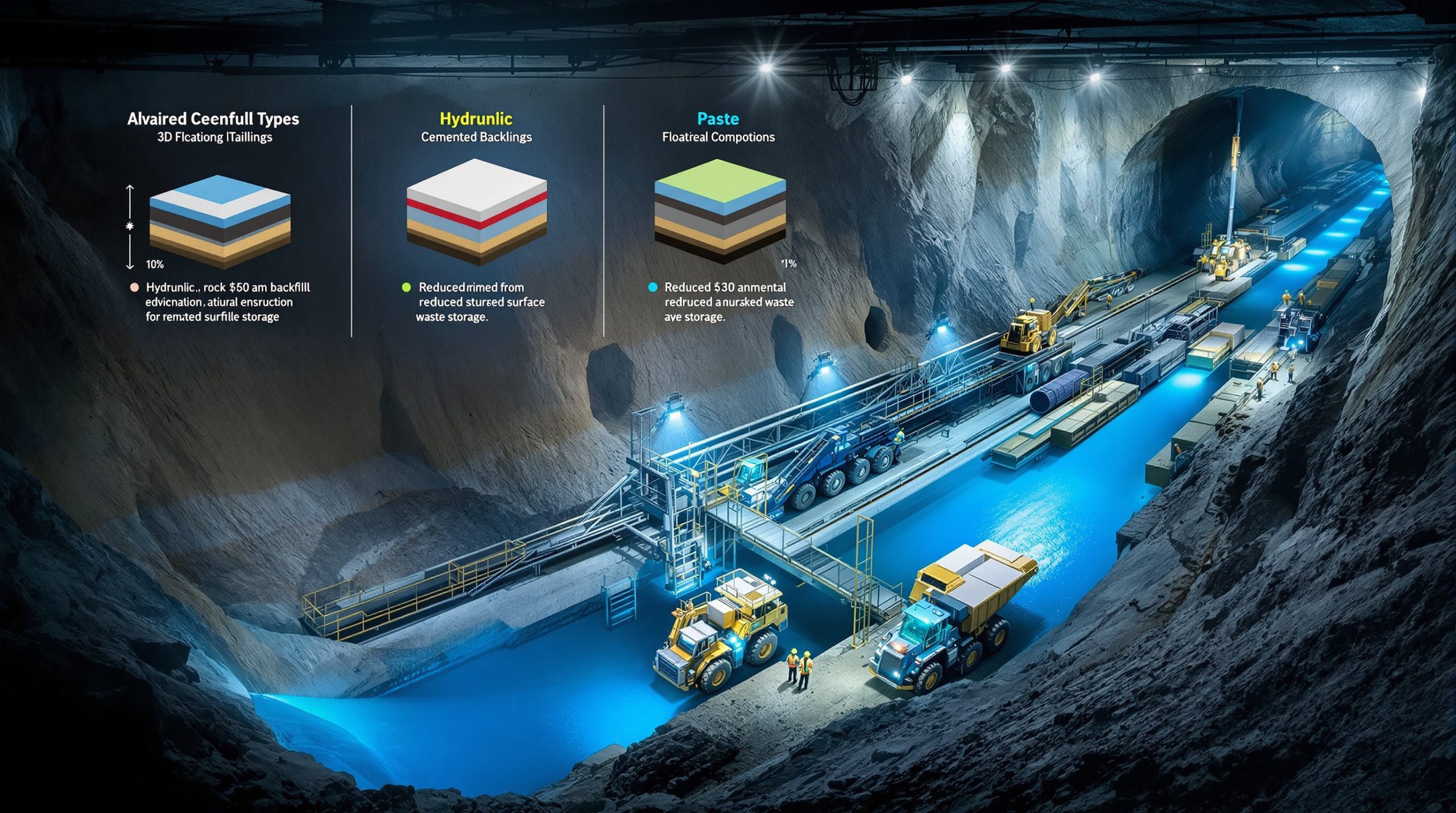Why Do Unexpected Oil Inventory Builds Matter?
Unexpected inventory builds in crude oil markets represent significant market anomalies that can dramatically shift trader sentiment, price forecasts, and production decisions. These surprise accumulations of oil stocks occur when actual inventory data significantly exceeds analyst predictions, creating ripple effects throughout global energy markets. Understanding these events requires examining both technical market factors and broader economic conditions that influence supply-demand dynamics.
Key Indicators of Inventory Surprises
Oil inventory data serves as a critical barometer of market health, with unexpected builds typically signaling one of several market imbalances:
- Supply growth outpacing consumption
- Demand weakness not yet reflected in production adjustments
- Logistical bottlenecks preventing oil from reaching end users
- Speculative positioning based on anticipated market conditions
What Causes Unexpected Oil Inventory Builds?
Supply-Side Factors Driving Inventory Accumulation
Production Surges Beyond Forecasts
When oil producers exceed projected output levels, the market can quickly become oversupplied. Recent data shows U.S. production reached record levels of 13.3 million barrels per day in 2025, surpassing analyst expectations by approximately 300,000 barrels daily. This persistent overproduction has contributed to several unexpected inventory builds throughout the year.
OPEC+ Compliance Issues
Despite announced production cuts, actual OPEC+ output often exceeds quota levels, creating market imbalances. Recent monitoring reports indicate compliance rates averaging only 75-80% among certain members, with OPEC production impact exceeding targets by approximately 800,000 barrels per day in mid-2025.
| Country | Official Quota (mb/d) | Actual Production (mb/d) | Compliance Rate |
|---|---|---|---|
| Saudi Arabia | 9.0 | 9.2 | 89% |
| Russia | 9.5 | 9.9 | 71% |
| Iraq | 4.0 | 4.3 | 62% |
| UAE | 3.0 | 3.2 | 75% |
Logistical Constraints and Bottlenecks
Transportation limitations can create localized inventory builds even when global markets appear balanced. Recent Alaska drilling policies and pipeline capacity constraints in the Permian Basin forced producers to store approximately 2.3 million barrels that couldn't reach refineries or export terminals, contributing to an unexpected inventory build despite strong demand fundamentals.
Demand-Side Factors Behind Inventory Surprises
Economic Slowdown Signals
Unexpected inventory builds often provide the first tangible evidence of economic deceleration. Recent data shows that when U.S. manufacturing indices dropped below 50 (indicating contraction) for three consecutive months in 2025, oil inventories subsequently built by 15.7 million barrels against expectations of draws, reflecting reduced industrial consumption.
Seasonal Demand Shifts
When seasonal transitions occur earlier or later than historical norms, inventory forecasts can miss the mark significantly. The delayed summer driving season in 2025 (starting approximately two weeks later than typical patterns) resulted in gasoline demand falling 5.8% below five-year averages during the traditional ramp-up period, causing crude inventories to build unexpectedly.
Currency Fluctuations Affecting Purchasing Power
Sharp currency movements can rapidly alter oil import economics for major consuming nations. When the dollar strengthened by 7% against a basket of emerging market currencies in Q2 2025, several developing economies reduced import volumes by an average of 11%, contributing to inventory builds in exporting regions.
How Do Markets React to Unexpected Inventory Builds?
Immediate Price Responses
Unexpected inventory builds typically trigger swift price corrections as traders reassess market fundamentals. Analysis of 2025 market data shows that WTI crude oil prices declined by an average of 3.2% within 24 hours following inventory reports showing builds exceeding forecasts by more than 3 million barrels.
Volatility Patterns Following Inventory Surprises
Market volatility tends to increase significantly after unexpected inventory builds, with price ranges widening by approximately 40% compared to normal trading patterns. This heightened volatility typically persists for 3-5 trading sessions before returning to baseline levels, creating both risks and opportunities for market participants.
Futures Curve Adjustments
Unexpected inventory builds often cause futures curves to shift toward contango (where future prices exceed spot prices), reflecting the cost of storing excess oil. Recent data shows that following major inventory surprises, the spread between front-month and six-month futures contracts widened by an average of $2.40 per barrel.
What Are the Broader Economic Implications?
Investment Decisions and Capital Allocation
Persistent unexpected inventory builds can significantly influence energy sector investment. Following three consecutive months of surprise inventory accumulation in early 2025, announced capital expenditure plans among major U.S. producers decreased by approximately 12%, representing nearly $4.7 billion in deferred investment.
Refining Margins and Downstream Effects
Unexpected crude builds often precede changes in refining economics. Analysis shows that crack spreads (the difference between crude oil and refined product prices) narrowed by an average of 18% within two weeks following major inventory surprises in 2025, squeezing refiner profitability.
Economic Growth Indicators
Oil inventory surprises have historically served as leading indicators for broader economic conditions. Data from the past decade shows that three consecutive months of unexpected inventory builds have preceded economic growth downgrades by an average of 0.4 percentage points within the following quarter.
How to Interpret Recent Inventory Build Patterns?
Comparing Current Builds to Historical Norms
Recent inventory builds must be evaluated against historical patterns to assess their significance. While a single weekly build of 7-8 million barrels might seem alarming, seasonal factors and baseline growth in storage capacity mean the threshold for "unexpected" builds has increased over time.
| Period | Average Weekly Build (mb) | Threshold for "Unexpected" (mb) |
|---|---|---|
| 2015-2020 | 3.2 | >5.5 |
| 2021-2023 | 4.1 | >6.8 |
| 2024-2025 | 4.8 | >7.5 |
Regional Disparities in Inventory Patterns
Inventory builds often show significant regional variation, revealing important market dynamics. Recent data indicates that while U.S. crude inventories have shown unexpected builds, European stocks have remained relatively balanced, suggesting region-specific factors rather than global oversupply.
Storage Capacity Utilization Metrics
The significance of inventory builds depends partly on available storage capacity. Current U.S. commercial storage utilization stands at approximately 67%, well below the 85-90% levels that would indicate severe market imbalances, suggesting the market still has substantial cushion to absorb additional unexpected builds.
How Do Traders Navigate Unexpected Inventory Builds?
Technical Analysis Patterns During Inventory Surprises
Certain technical patterns frequently emerge following unexpected inventory builds, providing potential trading signals. Analysis shows that approximately 65% of major inventory surprises in 2025 were followed by a "dead cat bounce" pattern, with prices rebounding 1-2% before resuming their downward trend.
Options Market Strategies
Options market activity often spikes following inventory surprises, with put-call ratios increasing by an average of 35% as traders seek downside protection. Particularly popular strategies include purchasing put spreads to capitalize on expected price declines while limiting premium costs.
Hedging Adjustments by Commercial Players
Commercial market participants typically increase hedging activities following unexpected inventory builds. Data from the Commodity Futures Trading Commission shows commercial short positions increased by an average of 14.2% within two weeks following major inventory surprises in 2025.
What's Behind the Recent Unexpected Inventory Builds?
Production Growth Outpacing Demand Recovery
Recent unexpected inventory builds reflect a fundamental mismatch between supply growth and demand recovery. While global oil demand has grown by approximately 1.2 million barrels per day in 2025, non-OPEC production has increased by nearly 1.8 million barrels daily, creating persistent market imbalances.
Shifting Trade Flows and Import/Export Patterns
Changes in global trade patterns have contributed significantly to regional inventory builds. U.S. crude exports decreased by approximately 650,000 barrels per day in Q2 2025 compared to Q1, causing domestic inventories to build unexpectedly despite relatively stable consumption patterns.
Speculative Positioning and Market Psychology
Market positioning ahead of anticipated events can exacerbate inventory builds. Data shows that speculative long positions decreased by nearly 35% in the weeks preceding several major inventory reports in 2025, suggesting traders were anticipating bearish data and positioning accordingly.
How Do Unexpected Inventory Builds Affect Market Forecasts?
Analyst Revision Patterns Following Inventory Surprises
Major unexpected inventory builds typically trigger analyst forecast revisions. Following the record-breaking 12.3 million barrel build reported in July 2025, average year-end price forecasts among major investment banks decreased by $5.70 per barrel within two weeks.
Predictive Value for Future Price Movements
Historical analysis shows that unexpected inventory builds have significant predictive value for medium-term price movements. When weekly builds exceed forecasts by more than 5 million barrels, prices have subsequently declined by an average of 8.2% over the following month in 70% of cases since 2020.
Impact on Production Forecasts and Investment Outlook
Persistent inventory builds typically lead to downward revisions in production growth forecasts. Following three consecutive months of unexpected builds in early 2025, projected U.S. production growth for the year was revised downward by approximately 250,000 barrels per day.
What Are the Storage Economics Behind Inventory Builds?
Cost Structures of Different Storage Options
Understanding the economics of different storage options helps explain inventory build patterns. Current data shows significant cost disparities between storage methods:
| Storage Type | Approximate Cost ($/bbl/month) | Flexibility | Typical Duration |
|---|---|---|---|
| Land-based tanks | $0.35-0.50 | Medium | 1-6 months |
| Salt caverns | $0.20-0.30 | Low | 3-24 months |
| Floating storage | $0.80-1.20 | High | 1-3 months |
| Pipeline fill | $0.15-0.25 | Very low | 6-36 months |
Contango Spreads and Storage Arbitrage Opportunities
The relationship between futures prices and storage costs creates economic incentives that influence inventory levels. Recent market conditions show front-month to 6-month spreads averaging $2.10 per barrel, slightly below typical storage costs, suggesting limited economic incentive for purely financial storage plays.
Strategic vs. Commercial Inventory Considerations
Different inventory categories respond differently to market signals. While commercial inventories react quickly to price incentives, strategic petroleum reserves operate according to national security considerations. Recent data shows commercial inventories increasing by 4.2% in 2025 while strategic reserves have remained relatively stable.
FAQ: Understanding Unexpected Oil Inventory Builds
What constitutes an "unexpected" inventory build?
An unexpected inventory build occurs when actual reported crude oil stockpiles increase significantly more than consensus analyst forecasts. Typically, a build exceeding predictions by more than 3 million barrels is considered unexpected, though this threshold varies seasonally and with market conditions.
How quickly do prices typically recover after an unexpected inventory build?
Historical data shows that following an unexpected inventory build, oil prices take an average of 8-12 trading days to recover 50% of their initial losses. However, this recovery timeline can vary significantly based on whether the build reflects temporary factors or more fundamental market imbalances.
Do unexpected inventory builds affect refined products differently than crude oil?
Yes, unexpected crude inventory builds typically impact refined product prices with a lag of 3-5 days as the supply imbalance works through the refining system. Gasoline prices show the highest correlation to crude inventory surprises, while distillates (diesel, heating oil) demonstrate more independent price behavior.
How do seasonal factors influence the interpretation of inventory builds?
Seasonal patterns significantly impact how markets interpret inventory data. A 5 million barrel build during peak refinery maintenance season (typically March-April) might be considered normal, while the same build during peak summer driving demand would represent a significant bearish signal. This oil price stagnation frequently occurs during periods of unexpected inventory builds, although markets occasionally experience an oil price rally despite bearish inventory data when other factors dominate market sentiment. Additionally, recent oil price movements have shown increasing sensitivity to inventory surprises, according to U.S. crude oil inventories data released by the Energy Information Administration.
Want to Spot the Next Major Resource Discovery Before the Market?
Discovery Alert's proprietary Discovery IQ model analyses ASX announcements in real-time, delivering instant alerts when significant mineral discoveries emerge. Visit our discoveries page to see how early identification of major finds can lead to exceptional investment returns.




